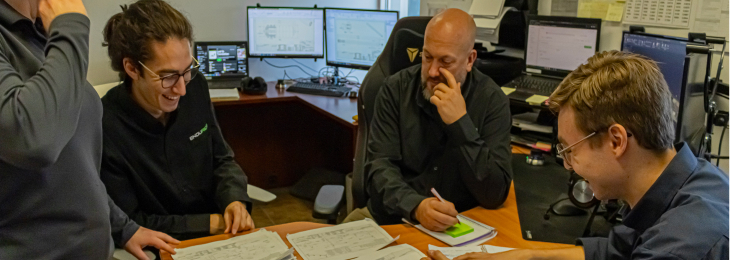ENDURIDE
Transforming our clients' metrics from red to green.
At the heart of our innovation lies a dedication to minimizing our customers’ expenses, achieved through measures like the strategic procurement of idlers, streamlined maintenance protocols, efficient shipping and handling, optimized acquisition costs, equipment safeguarding, and the mitigation of planned and unplanned downtimes.
What we do.
We are pioneers in the realm of cost-efficient technologies aimed at reducing cost per tonnage. Our specialization encompasses an array of comprehensive solutions for belt conveyors, including idlers, impactful management solutions, mesh machine guard systems, and dust containment mechanisms. With an unwavering focus on excellence, we cater to both local and international markets spanning the Americas, Africa, Scandinavia, and Europe.

How we do it.
Our 100% Canadian manufacturing speaks to our commitment to quality. Our team has a thorough understanding of customers’ needs, gained through site visits and close accompaniment throughout the process. We firmly believe that the key to success lies in close collaboration with our customers, to ensure that each solution is tailored to their unique requirements.



Enduride Expertise
Our mastery of mechanical physics enables us to design robust, reliable, and lasting solutions. We understand the forces and stresses acting on structures, as well as the properties of the materials used. This enables us to design products that withstand the most demanding conditions, while maximizing their ease of installation, performance, and durability.
Enduride Product Overview
At Enduride, we take great pride in developing solutions that not only meet the conveyors optimization of our customers but also prioritize the safety of individuals and demonstrate a strong commitment to the environment. We firmly believe that by placing people first, being mindful of our environmental footprint, and taking small steps, we can forge a path towards a better and more sustainable future for all. Each incremental action we take paves the way for greater achievements and lasting positive change.

